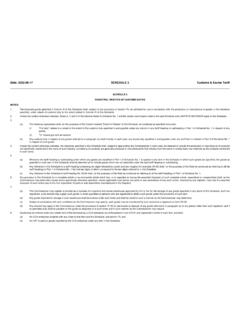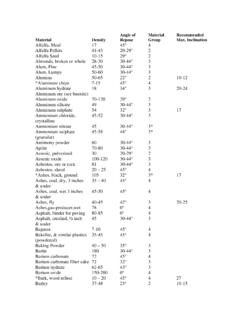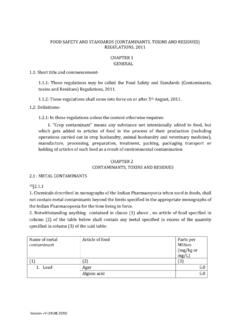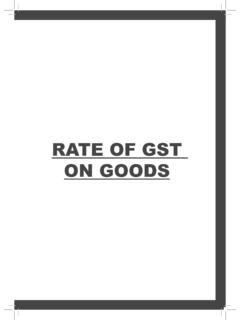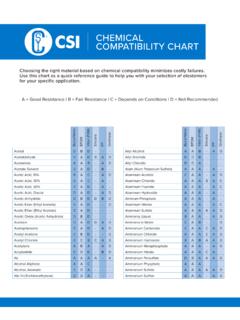Transcription of SWINE - University of Nebraska–Lincoln
1 Nebraska and South DakotaCooperative Extension Service / South Dakota State University and University of Nebraska / Department of AgricultureNebraska Cooperative Extension EC 95-273-CESS 38 SWINENUTRITION GUIDET able of ContentsIntroduction .. 1 Nutrient Sources .. 1 Energy .. 1 Protein and amino acids .. 4 Minerals .. 7 Vitamins .. 9 Bioavailability .. 9 Nutrient Interactions .. 10 Ingredient Quality .. 12 Feed Additives .. 14 Feed Processing .. 18 Water .. 19 Feed Intake .. 20 Health .. 22 Nutrient Recommendations .. 22 Practical Applications and Outcomes .. 27 Breeding Herd Management.
2 28 Growing Pig Management .. 31 Example Diets .. 32 Tools for Quantifying Performance .. 34 Methods of Supplying Nutrients .. 37 Conversion Factors, Abbreviations and Symbols .. 40 Index .. 41 Additional Information Sources .. 42 Issued July 20005,000 copiesDuane E. Reese, Extension SWINE Specialist, University of NebraskaRobert C. Thaler, Extension SWINE Specialist, South Dakota State UniversityMichael C. Brumm, Extension SWINE Specialist, University of NebraskaAustin J. Lewis, Professor, SWINE Nutrition, University of NebraskaPhillip S. Miller, Associate Professor, SWINE Nutrition, University of NebraskaGeorge W.
3 Libal, Professor Emeritus, SWINE Nutrition, South Dakota State UniversityWe appreciate the contributions of the following people for their assistance in preparing this AdvisorsDonnie R. Campbell, Roche Vitamins P. Chapple, Purina Mills, F. Nickelson, Livestock Nutrition & Management ServicesWayne L. Stockland, Consolidated Nutrition, L. Woerman, Land O Lakes/Harvest States FeedAdditional ReviewerC. Ross Hamilton, Darling InternationalThe University of Nebraska and South Dakota State University are solely responsible for the content of this endorsement of these firms is intended, nor a discredit to any one omitted from the publication is available at: < >.
4 Figure that were considered when developing nutrient advisors representingvarious facets of the pork industrywere recruited to review and chal-lenge the concepts incorporated inthis publication. Also, in situationswhere gray areas existed, theseindustry representatives madespecific proposals or recommenda-tions. Therefore, our ultimate goalwas to use the knowledge ofrespected SWINE nutritionists whorepresent a cross section of the feedindustry to improve the applicationof this publication. In preparingthis publication, a priority has beento discuss some of the controversialand experimental SWINE nutritionissues currently being discussion of these issues hasbeen focused to emphasize resultspresented in the scientific publication is a revision ofthe previous SWINE nutrition publi-cation prepared by the Universityof Nebraska and South DakotaState University .
5 The focus of thepublication continues to be onnutrient recommendations forswine. Specific factors (nutritional,environmental and managerial)that affect nutrient recommenda-tions (Figure 1) have been consid-ered and discussed. We believe thatthe identification and descriptionof the factors in Figure 1 providethe framework for the nutrientrecommendations presented inTables 11 to SourcesAn essential part of a soundfeeding strategy is to make gooddecisions on which ingredients touse in the diet. Ingredients providenutrients that pigs require for nor-mal performance. Pigs do notrequire specific ingredients in theirdiet, but instead require energy andnutrients such as amino acids,minerals and vitamins.
6 There arenumerous ingredients available touse in pig feed. Information in thissection is intended to help peoplemake good decisions on sources need energy for mainte-nance, growth, reproduction andFeedAdditivesGovermentRegulationsManu reManagementFeedIngredientQuality1 Table 1. Relative feeding values and maximum usage rates of energy sources. A * denotes no nutritional limitations in a balanced dietaMaximum recommended percent of complete dietsbIngredient (as-fed)Feeding value relative to corn, %cStarterGrow-finishGestationLactationAl falfa meal, dehy70 to 80010250 Alfalfa hay, early bloom65 to 75010600 Bakery waste, dehy110 to 120**Barley (48 lb/bu)90 to 10025*d**eBeet pulp80 to 900105010 Corn distillers grains w/solubles, dehy110 to 1205154010 Corn gluten feed95 to 105510*10 Corn, high lysine100 to 110**Corn, high oil100 to 110**Corn, hominy feed95 to 1050606060 Corn, yellow (> 40 lb/bu)100**Fats/oils (stabilized)
7 190 to 2005555 Millet, proso85 to 9540**40 Milo, grain sorghum (> 48 lb/bu)95 to 97**40 Molasses (77% DM)55 to 655555 Oats (38 lb/bu)85 to 951530*10 Oats, high lysine85 to 953060*10 Oat groats110 to 120**Ryef85 to 950252010 Triticalef,g95 to 10520404040 Wheat bran80 to 900103010 Wheat, hard (> 55 lb/bu)h100 to 11030**40 Wheat middlings110 to 120525*10aAssumes diets are balanced for essential amino acids, minerals and levels may be fed although performance may decrease. Economic considerations should influence actual inclusion = 100%. Values apply when ingredients are fed at no more than the maximum recommended % of complete diet.
8 A range is presented tocompensate for quality maximum performance, limit barley to 2/3 of the grain for 45 to 130 lb pigs. No limitation for pigs > 130 fiber in barley will reduce the ME/lb of feed. Thus, less should be used when feed intake is trypsin inhibitor varieties. Feed value tends to be highly ground. See the Feed Processing section for The bulk of the pig senergy requirement is met bycarbohydrates and fats. Fats andoils are dense sources of energy,containing about times morecalories than carbohydrates. Theenergy content of feedstuffs andenergy requirements of pigs arecommonly expressed as metaboliz-able energy (ME).
9 The ME contentof a feedstuff is determined by sub-tracting energy lost in the feces,urine and gasses from the grossenergy in the many cereal grains canprovide economical sources of energyfor pigs in the Midwest, corn is usedextensively in Nebraska and SouthDakota. However, economic condi-tions can change, making otherenergy sources attractive for inclusionin pig does one know whetheranother energy source is moreeconomical?Focus on the relative feedingvalue of energy sources shown inTable 1 rather than on achieving acertain feed efficiency or growthrate when evaluating alternative en-ergy sources.
10 Substituting milo forcorn, for example, likely will reducefeed efficiency, but may reduce the2cost of gain also. The feeding valueswere calculated using the ME, di-gestible lysine and available phos-phorus content of feedstuffs. Corn,soybean meal (44% CP) anddicalcium phosphate were used asreference feedstuffs. Corn is as-sumed to have a feeding value of100%. Grain sorghum (milo), for ex-ample, has a feeding value about95% that of corn. Thus, milo can re-place corn in the diet when theprice of milo is less than 95% of theprice of the same weight of example, if corn costs $.04/lb,milo would become more economi-cal to feed when it is less than$.


